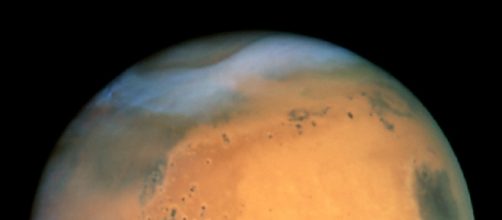The Mars Curiosity rover, which landed on the Red Planet in August 2012, has been so wildly successful that NASA would like to repeat the feat with a similar robotic probe called Mars 2020. Mars 2020 will land in a different location and will have a different suite of instruments. One added feature that the space agency is considering is a robotic helicopter drone that can fly through the Martian atmosphere independently.
The idea of creating an aerial drone that could operate in the skies over Mars presents a number of unique challenges. The Martian atmosphere is extremely thin compared with that of Earth.
A fixed wing aircraft would have to have enormous wings to compensate. The drone also has to be robust enough to survive the harsh conditions on Mars. An accident or a malfunction would end the drone’s operation 100 million miles or so from the nearest repair person.
Engineers at NASA’s Jet Propulsion Laboratory have hit upon a drone helicopter. The helicopter would be solar powered, be about the size of a 2.2-pound tissue box, and would have outsized rotor blades that measure 3.6 feet from tip to tip. The solar powered helicopter will be able to fly three minutes at a time and cover a third of a mile.
The idea is that the drone helicopter would perform aerial reconnaissance for the rover, flying ahead and scanning the terrain with a wide angle camera.
The drone would be able to scout out the best routes for the rover to travel and the best placed to stop and do science. The JPL engineers estimate that the rover will be able to cover three times as much ground as the Mars Curiosity has been able to.
Because of the time lag that can last as much as 20 minutes for a command to reach Mars, the movements of a rover on the surface has to be planned in advance and then executed. Real-time control is, of course, impossible. The helicopter drone would be able to provide controllers on Earth more data to devise the rover’s travel and operations.
By no means is it certain that the helicopter drone can be refined in time for the 2020 launch window. But if it is the drone should provide some spectacular images of the Martian landscape as the rover slowly makes its way across it.

